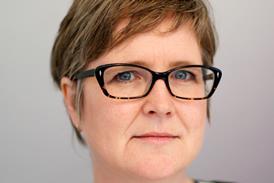Like many healthcare organisations across the country, Leeds Hospital Trust has grown significantly over the years, both from organic growth and as a result of mergers.
Such growth brings challenges which will be familiar to many. These include:
- A legacy of devolved IT management and low investment throughout the hospital’s life, resulting in several different clinical IT systems
- A need to handle the ever-increasing information contained in a patient health record
- A need to move from paper-based records to electronic, and to integrate the numerous electronic systems the trust has used for the last two decades.
These challenges demand a solution if we are to meet patient need in the future.
Currently, seventy five per cent of patients seen across the trust start their journey in one hospital and are then referred to a specialist department in another hospital or site. To obtain a complete electronic record summarising that patient’s treatment means linking to a number of different hospitals in the region. Over the past ten years, patient information portals have been developed in-house at Leeds, for example in the oncology unit. But such resources have relied on individuals physically copying and pasting data from one system into the other to build up an accurate patient history.
Our objective has been to advance patient care by improving how we store and share patient information. This has required us to enhance our approach to IT integration and innovation.
The right approach
Our strategy has been to embrace the integration of patient care information, based on technical roll-out of a ‘fit for purpose’ system. The success of this approach relies on three key elements.
First, you need to have the leadership and support of directors on the board. This fosters a willingness among senior executives to do what you need them to do, and convinces them that they must invest in the service to reap the benefits.
Second, clinical engagement must be incorporated right from the very start. The informatics projects I have seen fail in the last 20 years did so because they did not have an actively engaged clinician. Such engagement needs to happen from the outset to help develop a common language and a shared set of priorities.
Finally, the IT service must react far quicker than has typically been the case in the past. Too often, IT departments have not fully adopted new processes, limiting their potential. This may seem elementary, but in its absence it is very difficult to facilitate lasting change.
At Leeds, the first stage towards a connected healthcare service is close to completion - our Renal IT system will connect four trusts and 10 laboratories. This is a major integration project for the trust and is the first significant systems integration project across the region for a clinical network.
We chose InterSystems Ensemble, a rapid integration platform widely used in our region, and in over 50 trusts throughout the UK. This is the foundation of our service-orientated architecture, and helps us modernise our integration capabilities.
Live feeds are one of the main benefits of Ensemble. These will make the patient information system much quicker to update and easier to share between different hospitals. Records will no longer need to be updated manually by a lengthy process of cutting and pasting data or digitalising paper records, and will reflect test results in real-time. Most importantly, clinicians working in different hospitals will be able to track patients and make diagnoses as soon as test results become available online.
User engagement is already underway and user acceptance testing will begin shortly. We are confident that this will be the first successful implementation of many for our regional integration projects.
We believe Ensemble will significantly improve patient care and help to deliver the right information to the right user at the right time and the right place. A robust integration architecture is the key to achieving this when multiple systems are in use.
Next steps
It does not end there. We wanted to ensure the trust could be in a position to accommodate future technological innovation. This is in keeping with the government’s drive to promote innovation within trusts. My advice to any trust contemplating a new approach to their IT would be to ensure that the government’s Interoperability ToolKit standards are part of their thinking. The ITK standards are vital because they support a common system where trusts can share resources and activities. They also enable us to future-proof our IT so it is ready for yet-to-be-discovered innovations.
Alison Dailly is director of informatics at Leeds Hospital Trust



























No comments yet